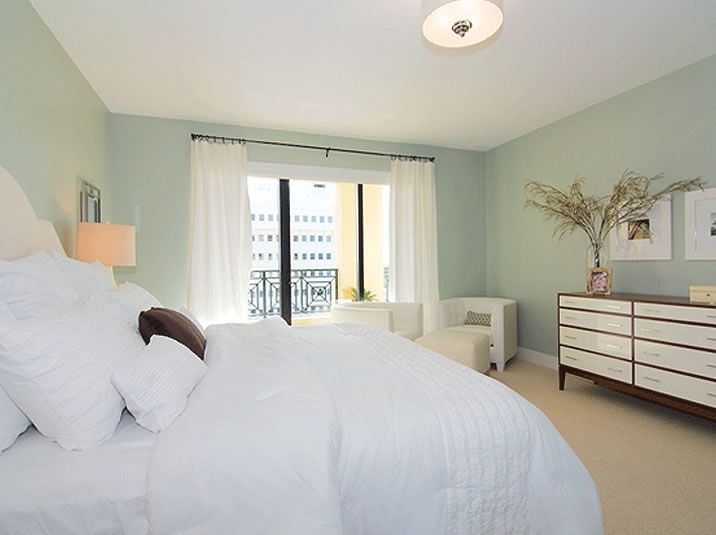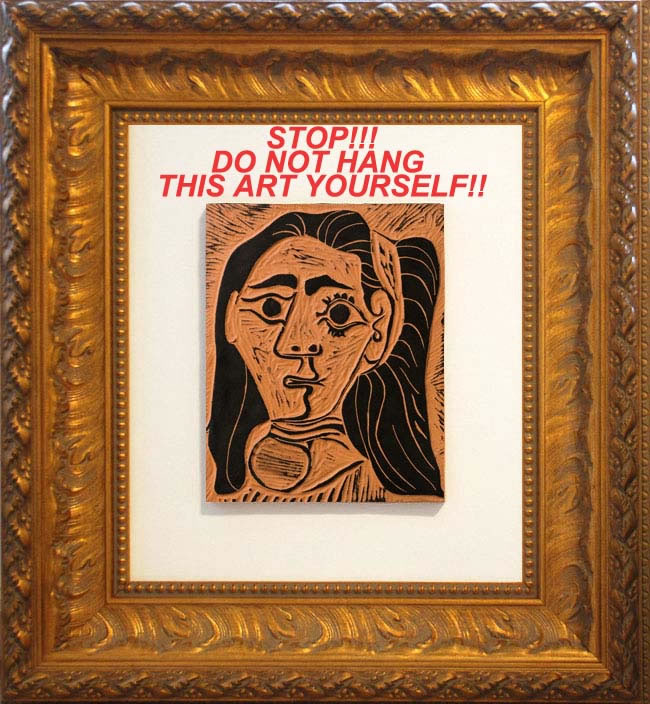
Art hung too haphazardly and too far apart from each other
“Art’s whatever you choose to frame.” – (Fleur Adcock)
Though I beg to differ with Adcock, (some things are just not art no matter who claims they are) he does have a point – art is very personal and should be more about how it makes you feel than how it matches the drapes. I think that people worry too much about “if a piece will work in a room.” Except in extreme cases, my general philosophy is that if you love it, then it will work. Your art should move you, make you think, make you happy – just make you feel.
The main question I ask is not, “How could they pick that piece?”, but “How could they hang it that way?” The biggest mistake I see is hanging art too high or with no regard to the viewer or other items and furniture nearby. Here are some quick guidelines for the next time you go to hang your art on your walls:

Multiple mirrors create rhythm and a sense of order and calm in this space
1. Follow basic principles of design such as balance, scale, proportion, rhythm, etc. This will keep your art harmonious in the room and will keep the viewer focused on the art and not the disharmony of the arrangement.

This mirror is hung at the correct height and in proper relationship to the credenza and other objects
2. If you aren’t lucky enough to have a designer draw your wall and do a mock-up of art placement and if you don’t know Photoshop, improvise on your own. First arrange your pieces on the floor by the wall, and then cut out paper templates by tracing around the frames. Use blue “painters’ tape” to tack these templates to the wall to confirm the layout and correct height. As a general rule, place the center height of your art (or main piece of art in a grouping) at around 5’-5” which is standard eye level. You want the average person to comfortably view the art or look in the mirror.

Art hung at eye level and centered over the furniture
3. Look at the entire wall as a unit. Take stock of the other items in the room such as lamps, furniture, windows. How do these items affect the layout? Is there a window on the left so you need to move the art to the right? Is there a low sofa that causes the art to look like it is floating so you need to “cheat” the art down a few inches? See more here on hanging your art near furniture.

This room has plenty of breathing space around the art and some empty walls without art
4. Don’t suffocate your walls with too much art. Leave some breathing room. Not every wall needs to be covered with art.

Very valuable art should always be hung by a professional with experience and insurance
5. Very expensive art should be hung and installed professionally. There are people who specialize in this type of work and are insured against damages. Please, don’t go break out your hammer and nails for an original Picasso, Kandinsky, or Asian Antiquity.

Interesting collage of art with different styles of frames and objects
6. If you are displaying more than one piece of art on a wall in a gallery format, then think of them as one unified piece a complete composition. Only leave a few inches between each piece of art. Don’t spread them out too far or they will look disconnected. Remember that you can mix in an interesting mask, a mirror, etc. and you will have a really unique display.

Resting art on surfaces keeps your walls hole free and allows you to frequently change art around your home.
7. Sometimes art can just rest on a surface – no hanging! This look has a casual feel and eliminates holes in walls (great for renters). You can rest an extra large mirror on the floor and lean it against the wall though it still may need anchoring if you have small children or anyone that may bump or pull on it. Other pieces of art can just rest on a surface or piece of furniture. You can even layer different pieces of art for an interesting look.
Don’t forget that hanging art should be fun! The rules are only guidelines and just like other rules, they are made to be broken.



